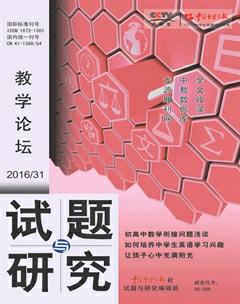Fostering learners’autonomy in teaching and learning
刘艳梅
Abstract: Fostering learners autonomy is of great significance in teaching and learning. This paper discusses the present problems in China, and proposes 4 ways to foster learners autonomy.
Key words: Learner;Autonomy;Learn;Strategy
I. Introduction
Learners autonomy refers to autonomous self-regulation which aims at providing learners with the ability to take more responsibility for their own learning. Fostering learners autonomy is of great significance on pedagogy because no students, anywhere, will have their teachers to accompany them throughout their life. Students should make decisions by themselves about what and how to learn. Once learners become autonomous, they have acquired a life-long learning skill and a habit of independent thinking, which will benefit them long after leaving university. Therefore, fostering learners autonomy in teaching and learning is urgent and necessary.
II. The present problems in Chinese teaching
Although great changes in teaching have taken place in recent years in China,the relationship between teachers and students is still unbalanced. It is featured by teachers dominance and control in classroom and learners passive acceptance of whatever teachers say and do for them. They view knowledge as something to be transmitted by the teacher rather than be discovered by the learner. When expected to move from this traditional role, students frequently show anxiety, who seem to be unprepared for the learning skills that are necessary to succeed in learning. Therefore, it is necessary and urgent to help students develop the abilities to learn independently.
III. Ways to foster learners autonomy in teaching and learning
(1)Change the beliefs of teachers and students
All behavior is governed by beliefs so is autonomous language-learning. Since the traditional teacher-centered learning and teaching have long influenced the learners, most teachers and learners are accustomed to those traditional methods. Therefore, teachers should be aware of their role in fostering autonomy and change from traditional teachers to facilitators, consultants, guiders and inspectors. Meanwhile, students also need to realize their central role in learning and take on new roles as planner, organizer, manager and evaluator of their own learning.
(2)Teach learning strategies
Learning strategies consist of two parts in general: cognitive strategies and meta-cognitive strategies. Through cultivating cognitive strategies, students can understand and master all kinds of learning skills such as listening, reading skills and so on. Through fostering meta-cognitive strategies, students can make plans, select learning modes, monitor learning process and evaluate themselves.
(3)Use cooperative learning
Cooperative learning is a powerful approach for learners autonomy, which aims to establish a community of learners so students are able to generate questions and discuss ideas freely with the teacher and other students. After participating in a cooperative lesson, students can complete similar tasks better by themselves and improve their own learning.
(4)Take advantages of computer resources
The application of computer resources can give students opportunities and environments of autonomous learning. Without reducing teachers classes completely, students can be scheduled to attend individual work sessions with computers. And with the help of the designed tasks, students can work individually and monitor themselves. Answers to the questions can be made available so students can correct their own mistakes. It will improve students ability of self-correction, and self-repair, making them become autonomous.
IV. Conclusion
Learning autonomy is so important all through everyones life that as teachers we should foster students learning autonomy as early as possible.
(作者单位:山东省广饶县第一中学)
——山东省济宁市老年大学之歌
——山东省广饶县花宫镇中心小学简介

